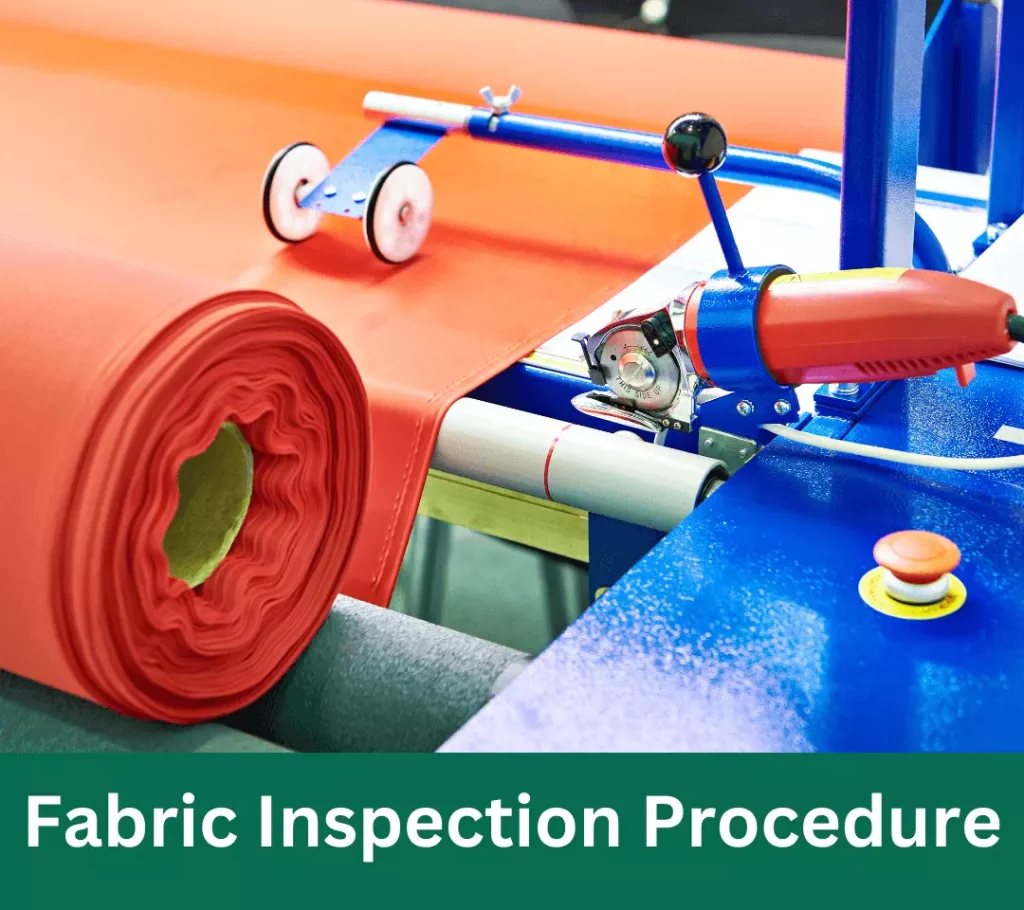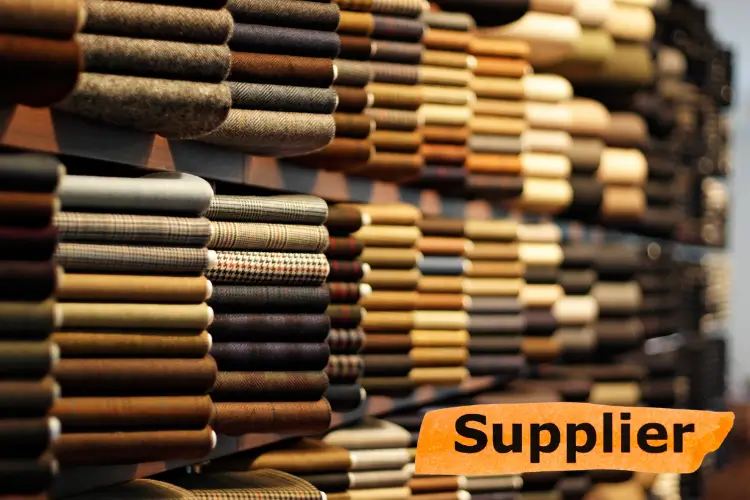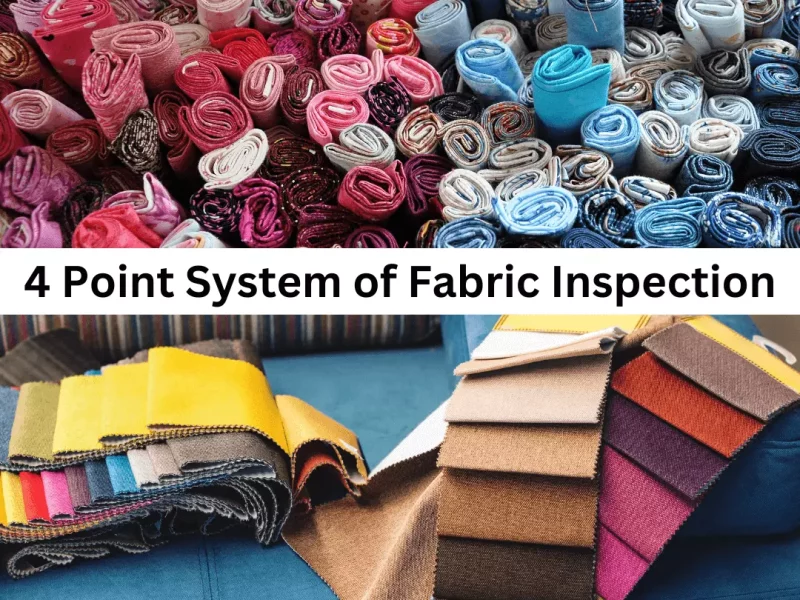Fabric inspection is an essential process in the textile industry to ensure that the fabrics meet the required quality standards. The procedure involves a series of activities that are required for identifying defects, assessing the physical properties, and analyzing the fiber content of the fabric. The importance of fabric inspection cannot be overemphasized, as it is critical to achieving consistency and quality in textile products. In this article, we will discuss the fabric inspection procedure in detail, including the various steps involved, a 4-point system of fabric inspection, and the importance of each step.

Fabric Inspection Procedure
The fabric inspection procedure is a critical step in the textile manufacturing process that involves a series of steps to identify defects for ensuring the quality and consistency of the fabric. The following are the steps involved in the fabric inspection process:
Visual Inspection
Visual inspection is the first step in the fabric inspection procedure. It involves examining the fabric with the naked eye to identify any visible defects such as stains, holes, or fabric irregularities. The inspector must be highly skilled and trained to identify any defects in the fabric accurately. This step is crucial as it helps in identifying any significant defects that might have occurred during the weaving or finishing process. If any defects are found, the fabric is rejected, and the manufacturer is asked to replace it.
Example: An inspector examines a roll of fabric for any visible defects such as stains, holes, or fabric irregularities.
Fiber Content Analysis
Fiber content analysis is the second step in the fabric inspection procedure. It involves identifying the type of fibers used in the fabric. The inspector uses a microscope or a burn test to identify the type of fibers used in the fabric. This step is crucial as it helps in identifying the quality of the fibers used and ensures that the fabric meets the required specifications.
Example: An inspector using a microscope to identify the type of fibers used in the fabric.
Physical Testing
Physical testing is an essential step in the fabric inspection procedure. It involves assessing the physical properties of the fabric, such as its strength, elasticity, and durability. The inspector uses various equipment, such as a tensile tester, to measure the strength of the fabric. This step is crucial as it ensures that the fabric meets the required standards for its intended use.
Example: An inspector uses a tensile tester to measure the strength of the fabric.
Defect Identification
Defect identification is the final step in the fabric inspection procedure. It involves identifying any defects that were not visible during the visual inspection. The inspector uses various equipment, such as a lightbox or a magnifying glass, to identify any defects in the fabric. This step is crucial as it ensures that the fabric meets the required quality standards.
Example: An inspector using a lightbox to identify any defects in the fabric that were not visible during the visual inspection.
4 Point System of Fabric Inspection
The 4-point system is a widely used fabric inspection method that allows manufacturers to grade fabric defects based on their size and severity. It’s an effective way of ensuring that the fabric meets the required quality standards and is suitable for its intended use. Here’s a step-by-step guide on how to use the 4-point system in fabric inspection:
Step 1: Divide the fabric into sections
The first step in using the 4-point system is to divide the fabric into sections, typically four sections. The sections can be defined by marking the fabric with chalk or using tape.
Step 2: Assign points to defects
The next step is to assign points to the defects found in each section. The points are assigned based on the size and severity of the defects. For example, a small defect may be assigned 1 point, while a large and severe defect may be assigned 4 points. Here is a table that shows the point values assigned to defects:
| Defect Size | Point Value |
| Up to 3″ | 1 |
| 3″ – 6″ | 2 |
| 6″ – 9″ | 3 |
| Over 9″ | 4 |
Step 3: Calculate the total points
After assigning points to each defect, the next step is to calculate the total points for each section. The total points are obtained by adding up the points assigned to each defect in that section. Here is an example of a section with defects and their assigned points:
| Defect | Size | Point Value |
| Hole | 4″ | 2 |
| Stain | 2″ | 1 |
| Run | 8″ | 4 |
Total Points = 2 + 1 + 4 = 7
Step 4: Determine the grade
Once the total points for each section are calculated, the next step is to determine the grade for the fabric. The grade is calculated by adding up the total points for all the sections and dividing the sum by the total area of the fabric. This calculation results in the points per square yard (or meter) of fabric. Here is an example calculation:
Total Points = 7 + 6 + 4 + 3 = 20
Total Area = 10 square yards
Points per square yard = Total Points / Total Area Points per square yard = 20 / 10 = 2
In this example, the fabric has a grade of 2.
Step 5: Determine acceptability
The final step in using the 4-point system is to determine the acceptability of the fabric based on the grade obtained. The acceptability criteria may vary depending on the industry and the intended use of the fabric. In general, a higher number of defects may result in the rejection of the fabric. Here is an example of an acceptability chart for a grade 2 fabric:
| Grade | Acceptability |
| 1 | First quality |
| 2 | Commercial |
| 3 | Seconds |
| 4 | Rejected |
Based on this chart, the fabric in our example would be considered commercial quality and suitable for use in products that don’t require a high level of quality, such as industrial fabrics or low-cost apparel.
It’s important to note that the 4-point system is just one of many fabric inspection methods, and its effectiveness may depend on the specific industry and product requirements. Some industries may use more stringent inspection methods, while others may rely on visual inspection or other techniques. Ultimately, the key is to use a method that is appropriate for the specific application and can reliably identify defects that could affect the product’s quality and performance.
Importance of Fabric Inspection Procedure
The importance of the fabric inspection procedure cannot be overstated, as it helps manufacturers to maintain quality control, avoid costly returns, improve efficiency, and build a good reputation in the industry. Here are some key points elaborating on the importance of the fabric inspection procedure:
1. Quality Control
Fabric inspection procedure helps manufacturers to maintain quality control by identifying defects early on in the production process. By detecting defects such as stains, holes, or fabric irregularities during the visual inspection stage, manufacturers can take corrective action and prevent the production of substandard products. This, in turn, ensures that the final product meets the required quality standards and improves customer satisfaction.
2. Avoiding Costly Returns
By conducting fabric inspections, manufacturers can avoid costly returns that can damage their reputation in the industry. If a manufacturer produces substandard products, they may be required to take back or replace the products at their own expense. This can be a significant cost for the manufacturer, and it can also result in a loss of business. By identifying defects early on and taking corrective action, manufacturers can avoid these costs and maintain a good reputation in the industry.
3. Improving Efficiency
Fabric inspection procedures can help to improve efficiency by avoiding the need for rework or scrap. By identifying defects early on in the production process, manufacturers can take corrective action and prevent the need for rework or scrap, which can save time and resources. This, in turn, can help to improve the overall efficiency of the production process, resulting in faster production times and increased profitability.
4. Building a Good Reputation
By producing high-quality products, manufacturers can establish themselves as reliable and trustworthy suppliers, which can lead to repeat business and increased customer loyalty. This, in turn, can help to build a good reputation in the industry, which is essential for long-term success.
5. Meeting Legal Requirements
In some cases, fabric inspection procedures may be necessary to meet legal requirements. For example, some industries may require that textile products meet certain safety standards, such as flame resistance or colorfastness. By conducting fabric inspection, manufacturers can ensure that their products meet these requirements and avoid legal issues.
Conclusion:
Fabric inspection is a critical process in the textile industry that helps to ensure quality and consistency in textile products. The procedure involves a series of steps, including visual inspection, fiber content analysis, physical testing, and defect identification. By using a method like the 4-point system, manufacturers can quickly and effectively identify defects and determine the acceptability of the fabric. This, in turn, helps minimize waste, reduce costs, and ensure customer satisfaction.
FAQs:
What is the purpose of fabric inspection?
The purpose of fabric inspection is to ensure that the fabric meets the required quality standards and to identify any defects before the fabric is used in the production process.
What are the steps involved in fabric inspection?
The steps involved in fabric inspection include visual inspection, fiber content analysis, physical testing, and defect identification.
Why is visual inspection important in fabric inspection?
Visual inspection is important in fabric inspection as it helps to identify any visible defects such as stains, holes, or fabric irregularities.
What is fiber content analysis?
Fiber content analysis is the process of identifying the type of fibers used in the fabric.
Why is physical testing important in fabric inspection?
Physical testing is important in fabric inspection as it helps to assess the physical properties of the fabric, such as its strength, elasticity, and durability.
What is defect identification in fabric inspection?
Defect identification is the process of identifying any defects in the fabric that were not visible during the visual inspection.
What are the benefits of fabric inspection?
The benefits of fabric inspection include ensuring quality control, avoiding costly returns, maintaining customer satisfaction, and improving efficiency.
What equipment is used in fabric inspection?
The equipment used in fabric inspection includes a microscope, a burn test kit, a tensile tester, a lightbox, and a magnifying glass.
Who conducts fabric inspection?
Fabric inspection is conducted by highly skilled and trained inspectors who have the expertise to identify defects accurately.
How often is fabric inspection conducted?
Fabric inspection is conducted at various stages of the production process, including before and after dyeing and finishing. The frequency of fabric inspection depends on the specific requirements of the manufacturer and the intended use of the fabric.
What is the 4 Point System of Fabric Inspection?
The 4 Point System of Fabric Inspection is a method used to inspect and grade fabrics based on their quality. It involves checking for defects, color consistency, print quality, and size measurements to ensure that fabrics meet the necessary standards for their intended use.
Who uses the 4 Point System of Fabric Inspection?
The 4 Point System of Fabric Inspection is used by textile manufacturers, fabric wholesalers, and retailers to ensure the quality of fabrics used in various products.
How is the 4 Point System of Fabric Inspection different from other fabric inspection methods?
The 4 Point System of Fabric Inspection is different from other fabric inspection methods because it focuses on four specific areas: fabric quality, color, print, and measurements. Other methods may focus on different areas or may not be as comprehensive.
Can the 4 Point System of Fabric Inspection be automated?
Yes, the 4 Point System of Fabric Inspection can be automated using various technologies such as computer vision and artificial intelligence. This helps to improve efficiency and accuracy in the inspection process.
Is the 4 Point System of Fabric Inspection only used for new fabrics?
No, the 4 Point System of Fabric Inspection can be used for both new and used fabrics. It is important to ensure that used fabrics meet the necessary quality standards before they are reused or repurposed.


